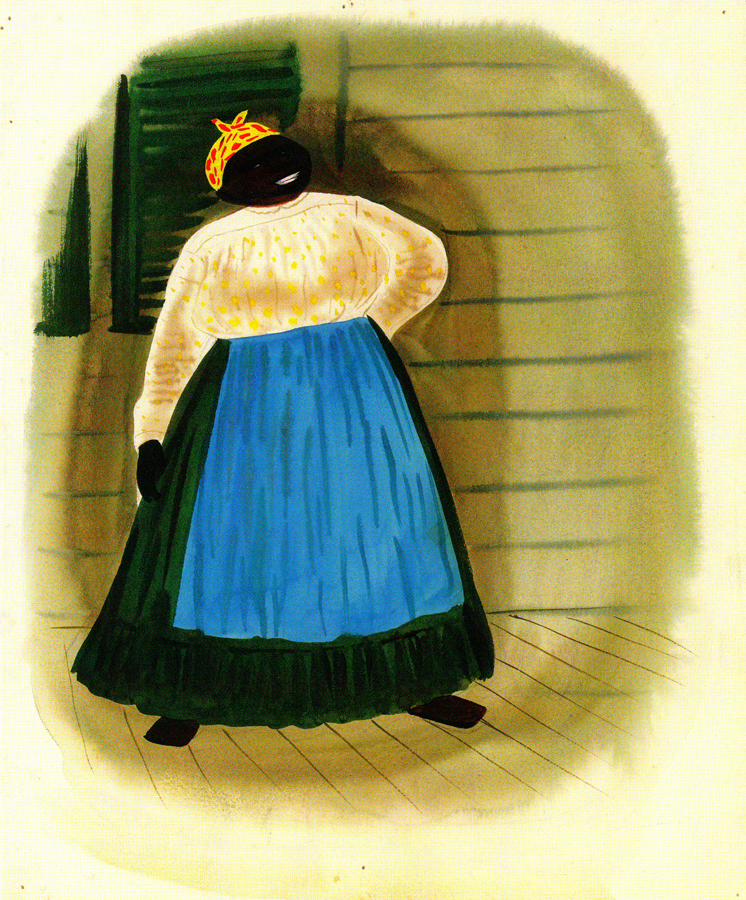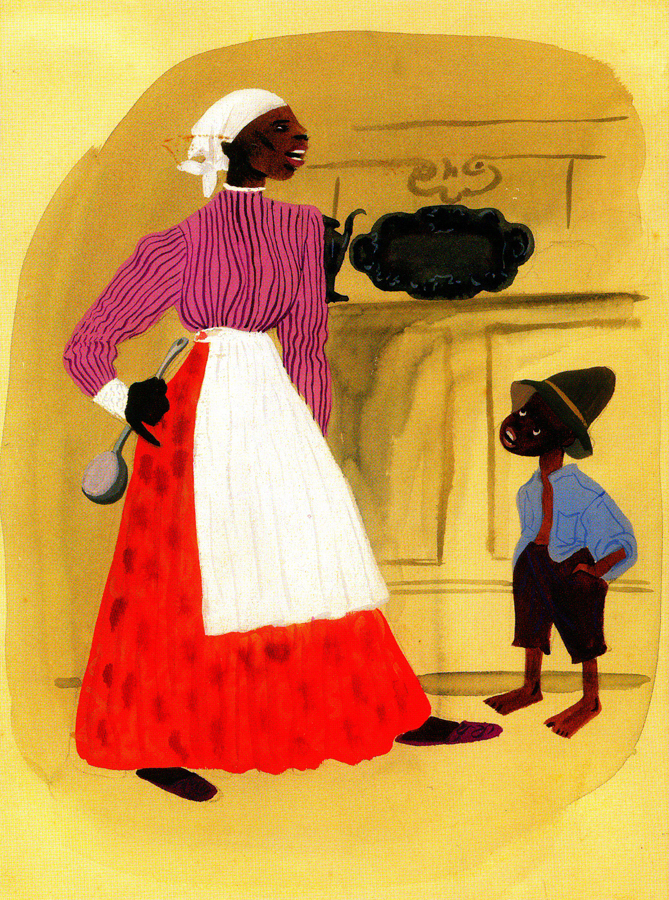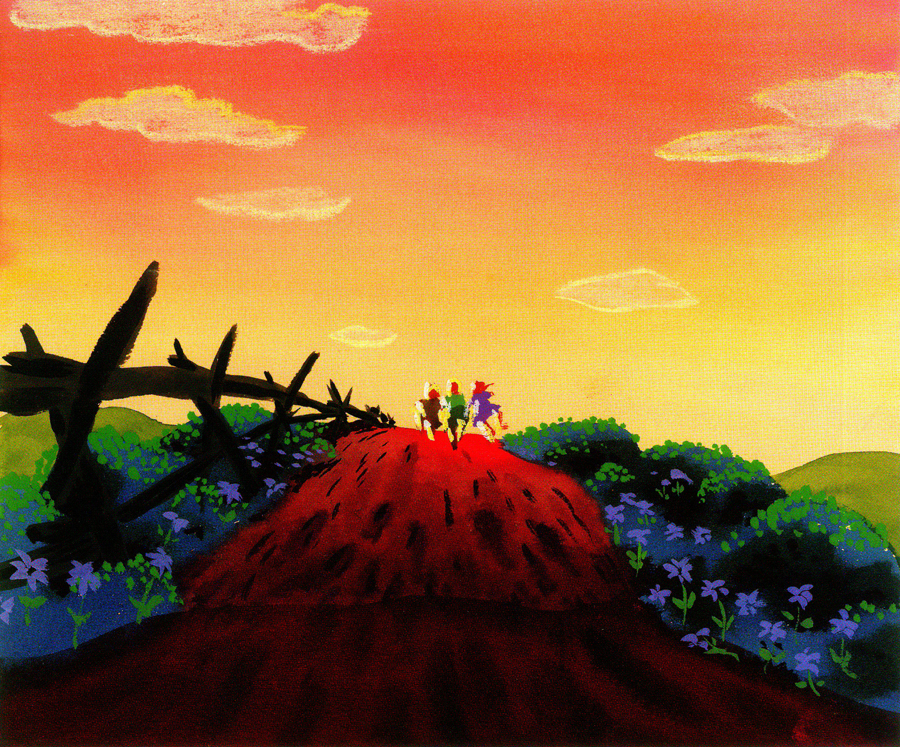Books &Commentary &Disney 19 Feb 2013 05:17 am
Jim Korkis’ Song of the South
 As the War came to an end, Walt Disney realized that he needed to find a way to raise money for his movies or, at the least, make films more profitably. One idea he chose to employwas to make more live action film.
As the War came to an end, Walt Disney realized that he needed to find a way to raise money for his movies or, at the least, make films more profitably. One idea he chose to employwas to make more live action film.
He’d had some modest success with The Three Caballeros and Saludos Amigos by combining live action and animation.
For years he’d thought of doing a combination film with Alice In Wonderland placing a live action Alice in an animated world, not unlike the early silent films Alice in Cartoonland.
Disney also thought of going to the stories of Joel Chandler Harris. By making the story of the humans in live action and the stories of Br’er Rabbit, Br’er Fox and Br’er Bear in animation, as told by Uncle Remus who would star in the significant part of the story told in live action. Thus he could easily work as the voice over narrator for the animation.
The film went into production in 1945 and pulled Disney down a harsh and difficult path.
Now, some 70 years later, studio head, Robert Iger, has vowed numerous times to keep Song of the South (the film’s title) on a shelf in the Disney vault, which is where it remains.
Disney historian, Jim Korkis, has written a series of excellent essays which act as chapter in a new book about the making and unmaking of this film. In his book, Who’s Afraid of Song of the South, a great weight of information completely informs us about this movie while being written in a positive and gentle approach.
Were the film as bad as Iger and other Disney executives want us to believe, here would still be a good reason for this book’s existence. Perhaps, though, it might have been a larger and more colorful tome.
The live action, representing about 60% of the film is not well conceived. It is terribly out of date and not well directed. Most importantly, the film is not well written. It’s somewhat confusing as to when the story takes place (pre- or post-Civil War?) What are the father’s resources, who owns the plantation where they’re living and where is the story trying to take us.
The acting by James Baskett as Uncle Remus is superb and wholly deserving of the Special Oscar he received. Child actor, Bobby Driscoll, is also fine, but many of the other performances are bland and not very noteworthy. The film is horribly dated. The Disney people sought the finest cinematographer they could get, and they did find him in Gregg Toland. He was the brilliant photographer of Citizen Kane and How Green Was My Valley. However, Song of the South was his first color film, and that was an enormous leap to make at the time. Toland had good reason to want to do the movie, but the film feels like Gone With the Wind – lite and helps to make it feel dated.
 However bad the live action was, the animation was the polar opposite. The stories are told very economically with lots of excitement and life in the storytelling. All those who worked on it spoke openly about how much fun they had in doing it. Those results showed up on the screen. The characters are delightful and beautifully developed. This was certainly the spark everyone in the animation department needed as they came off years of toiling away at dry, training films for the military.
However bad the live action was, the animation was the polar opposite. The stories are told very economically with lots of excitement and life in the storytelling. All those who worked on it spoke openly about how much fun they had in doing it. Those results showed up on the screen. The characters are delightful and beautifully developed. This was certainly the spark everyone in the animation department needed as they came off years of toiling away at dry, training films for the military.
While the live action dates the material and plops it in a marginally racist context, the opposite is true of the combustible animation.
The Disney studio has hidden the DVD of this movie from the General Public. There are illegal copies of film circulating the Internet, but the quality could never be as good as a studio sanctioned copy of the movie. It’s truly unfortunate, for the sake of that great animation, that the film is inaccessible.
Korkis’ book is a very quick read and he seems to cover the story well. One would have liked a richer book with glossy images, especially of the beautifully designed Mary Blair animation.One wishes that there were lots of stills of the great Bill Peet storyboard or those great animation drawings by the Nine Masters who were truly in their prime. But we have what we have, and we’re thankful for that.

If you have any interest in this film you will have to get your hands on a copy. The last half of the book if filled with some essays about other, lesser films. Some of th essays are truly excellent and feel hidden in the back of this book. One, for example, about a commercial producing studio Walt had on the lot. Learning that Walt’s daughter, Sharon, worked as an assistant to his sister-in-law’s sister, who ran the company, would seem to be a key piece of information. But when you start to learn who Walt used to do the animation work (Tom Oreb designing for Charles Nichols directing with Phil Duncan, Amby Paliwoda, Volus Jones and Bill Justice all were among those animating. There’s even the story of Bill Peet being punished by Walt and made to work on a Peter Pan peanut butter campaign.) This is an excellent piece. As is the story behind The Sweatbox, the feature documentary that was hidden by the Disney studio about the adventures in the making of the Emperor’s New Groove. Lots to read here.
All in all, this book is an excellent bargain.
All of these illustrations were done by Mary Blair for the film.
They’re not part of Jim Korkis’ book.On Thursday I’ll repost Bill Peet’s storyboard for The Tar baby.



on 19 Feb 2013 at 2:14 pm 1.Joel Brinkerhoff said …
The Remus stories are rich in characters and humor. Not only are the antics of the critters funny and sometimes cruel but Remus and his relationship with other household servants gives much warmth and affection to the tales. Daddy Jack has tales to rival Uncle Remus and the two would treat the little boy to marathon story telling, each storyteller trying to out do the other. Disney had an abundance of material to consider, it’s a shame the story never gelled.
It’s a shame we have become so overly sensitive that “Song of the South” is taboo. What about the crows in Dumbo? Will Dumbo be next to be shelved?
on 19 Feb 2013 at 2:17 pm 2.Michael said …
Thank god Disney doesn’t control GONE WITH THE WIND. It’s no less racist; I saw the film just this past weekend, and it’s still a great movie.
on 19 Feb 2013 at 5:54 pm 3.Eric Noble said …
The greatest crime of SONG OF THE SOUTH is that it’s boring for the most part. The cartoon segments are easily the best parts of the film. The Disney animators were in top form on those.
on 19 Feb 2013 at 7:26 pm 4.Stephen perry said …
At least the film got released on video in the UK and has been aired on TV . It still has some of the best live action, animation combination ever done, far better than sodium screen process used on Mary Poppins and bed knobs and broom sticks with the actors casting multiple shadows on the set.
on 19 Feb 2013 at 8:49 pm 5.Michael said …
I have to agree with you about the live/animation combination. It’s never been done better. Part of that has to do with James Baskett’s great acting. He actually keeps refocusing his eyes as the characters move. I hate Mary Poppins combination work and I can’t even watch Bedknobs.
on 19 Feb 2013 at 11:39 pm 6.Bill Perkins said …
Hi Michael. I posted this comment on Mark Mayersons blog a month or so ago.There’s another book on “Song of the South” just released on Amazon,its title is “Disney’s Most Notorious Film: Race,Convergence,and the Hidden Histories of Song of the South” authors name is Jason Sperb. Its pricey but might be worth a read also. Mark mentioned there is a review of the book on Slate.com
Are the Mary Blair illustrations you posted in the Korkis book ? If not what is the source ?
on 20 Feb 2013 at 12:08 am 7.Robert Forman said …
I’m guessing that the reason there are no illustrations in the book can be explained by this post by Mike Barrier regarding his own an Amid Amidi’s problems with Disney, Inc.
http://www.michaelbarrier.com/Home%20Page/WhatsNewArchivesNov12.html#akimballcrisis
on 20 Feb 2013 at 4:42 am 8.Michael said …
The Mary Blair book is the source.
on 20 Feb 2013 at 4:55 pm 9.Kevin Hogan said …
I should read the Song of the South book- thanks for the tip.
I have always felt that certain films are not widely available for a reason. While historians and Disney Completists may moan and groan about SOTS’ lack of availability, for everyone else it is unlikely to be missed. This article is correct- the film is slow, poorly paced, clumsily directed, and (if not purely racist) uncomfortable with it’s depictions of southern life. If the public demanded it to be available on a large scale, Iger would cave. But most people don’t care to see a subpar and (arguably) insensitive film.
I personally do not blame Iger for keeping SOTS on the shelf. The cartoon pieces (which are the only sections of the film truly worth seeing) are widely available in other formats, and anyone desperate enough to see the lackluster live action can get a copy from Japan on ebay (or find it on Youtube.com like I did).
on 15 May 2014 at 12:58 pm 10.Odtrucia Alkoholowe Warszawa said …
Polecamy najlepsze Odtrucia Alkoholowe Warszawa. Najlepsze odtrucia poalkoholowe w Warszawie tylko u nas.